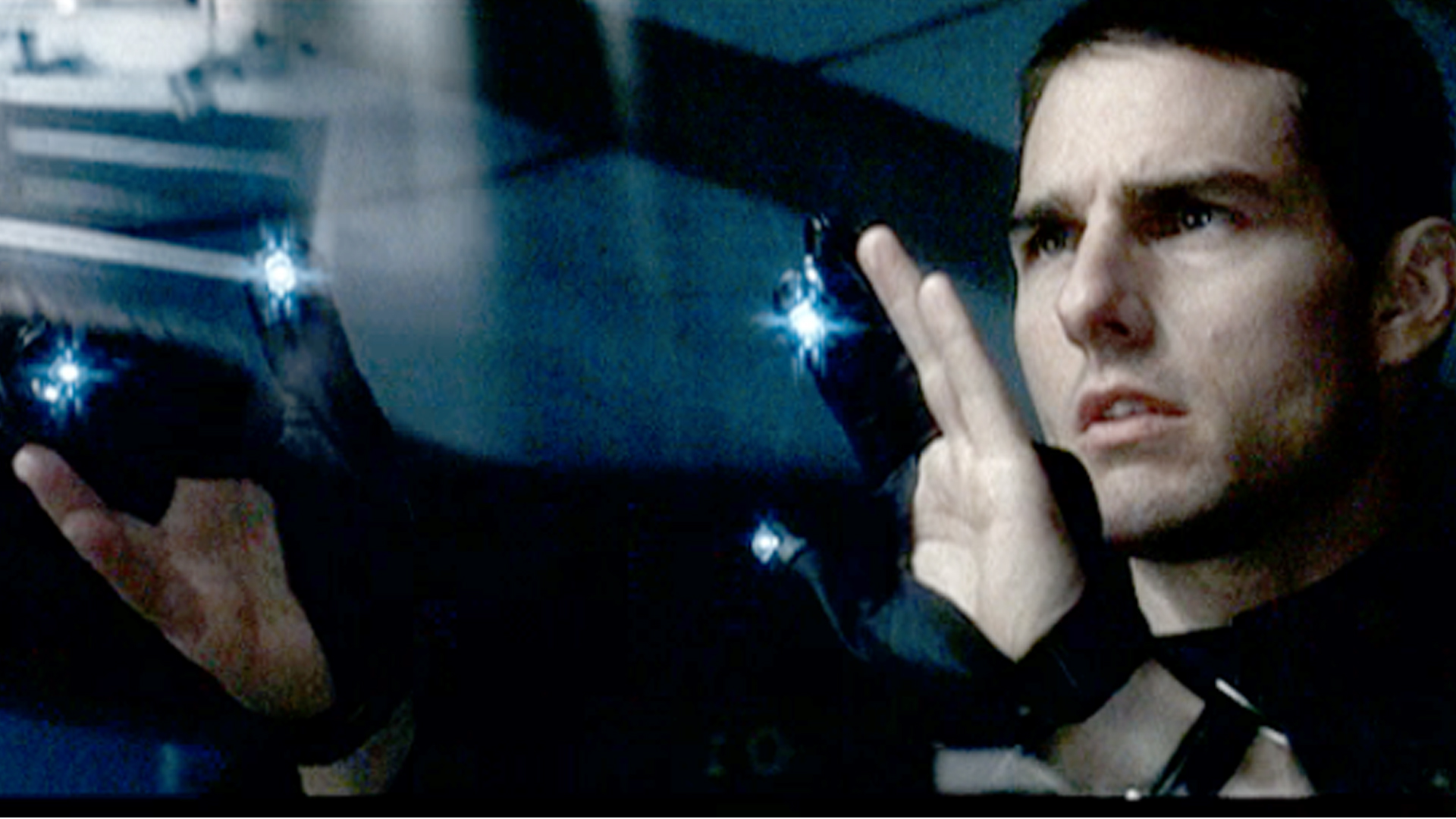What are the pieces of a great sci-fi movie? Usually the source material is from a stellar writer, especially the master Philip K. Dick. This material usually comments on the world of today via the story of the future. And there’s a completely well thought out world that is so visually stunning that it mesmerizes the imagination. Throw in a little Tom Cruise and Steven Spielberg, and you have the recipe for the greatest sci fi movie of all time, Minority Report.
In an amazing intro, we see a future version of Washington DC where crime has been all but eliminated in the city. How is that possible? 3 “Precogs,” sentient beings with gifts (one played by Samantha Morton), can predict crimes before they happen. The 3 are housed in a secure Pre-crime facility run by Director Lamar Burgess (Max von Sydow) and Chief John Anderton (Tom Cruise), where their images are channeled onto a big board where John solves the crimes before they happen. One Day Danny Witwer (Colin Farrell) is brought in from the US government to make sure the program is solid before it gets rolled out nationally. Coincidentally, Anderton learns that he is the next person on the Precog murder list. He then must go on the run, using his knowledge of the program and connections in the underworld (he is a cop) to try to clear his name.
OK, first the world: holy amazeballs, Steven Spielberg. You know your movie is good because in a few years we start to see the changes the movie predicts. Cops in jetpacks, touch screen computers, call-in-picture, self driving cars (the films first of many amazing chase sequences), tasers over guns, eyeball imaging, memories on flash drives. Juxtaposing this crazy technology is conservatories and beautiful lakehouses; heck, even a gun plays a crucial role in the third act. This is a reasonable world we can see from our own: key to Spielberg telling the grounded story he is about to.
Because, this story, written by Scott Frank and Jon Cohen, and executed by Spielberg, is about as perfect an a sci-fi story that you will ever see put to film. The opening sequence shows just how powerful this program is, establishes the rules of the world, and establishes the key players in the movie in 15 minutes, just…impressive. The pre-crime concept establishes a built in countdown for when Anderton is going to murder his victim, so there are built in stakes as the clock gets slower. The future comes into play with all the ways Cruise has to change himself to evade capture, and leads to one of the tensest scenes of the movie, where spider robots go into a housing complex Anderton is mostly incapacitated, and resting inside, and attempts to identify him. Speilberg also makes the cops really smart: they identify solid leads that make Anderton have to use exceptional resources to evade. The best chase sequence is in a mall that I won’t reveal too much about, but suffice to say, it’s written to be the most inventive chase I’ve ever watched in a movie. This Anderton story builds magnificently to a rousing climax that left me on the edge of my seat.
Even a great movie could have probably ended here. However, Spielberg uses the resolution of this story as a pivot instead of climax, leading to a plot twist that made me audibly gasp in the theatre. This is because the story isn’t just a character study of John Anderton, but a serious piece of pensive sci-fi: Technically, aren’t these Pre-crime cops arresting innocent people? Are the precogs really human anymore? Would all of those people really murder their victims? How can this system work if not everyone arrested is guilty? These are serious questions that are well thought out by the third act and lead to an inevitable conclusion based on the story we just watched.
All the actors in here bring their A games to complement the story. This is as good a Tom Cruise I have seen in a movie. John Anderton is a driven man crippled with guilt and loss from his past, that he channels into what keeps him moving forward with this project he believes in. Before he became the Three Eyed Raven and every millenial knew who he was, this was my first exposure to Max von Sydow (I know now he worked with the great directors like Ingmar Bergman and was the priest in the Exorcist), and he wonderfully underplays his role here. You can track Colin Farrell’s Hollywood career as basically starting after Minority Report. I remember at the time watching the movie and going “Who’s THAT guy? He’s awesome!” Samantha Morton is also quite spectacular as Agatha, the head precog, and really sells the burden she is aware that she carries. Neal McDonough, Lois Smith, Tim Blake Nelson, Daniel London, Peter Stormare, and Kathryn Morris all come in for one or two scenes and kick ass, really giving the movie a ton of charisma and personality.
To this day, scenes from Minority Report will pop in my head, as well as the brilliant pieces of the story. This movie is so good that for me, it surpasses Saving Private Ryan and Schindler’s List on Speilberg’s resume: this is his best film. Very few movies will have you enthralled with the visual effects and have you thinking about what these effects are trying to say, both compelling you to keep watching, thankfully movies like Minority Report remind me of just how spectacular a brilliant screenplay and brilliant director can merge those two concepts into a perfect moviegoing experience.

